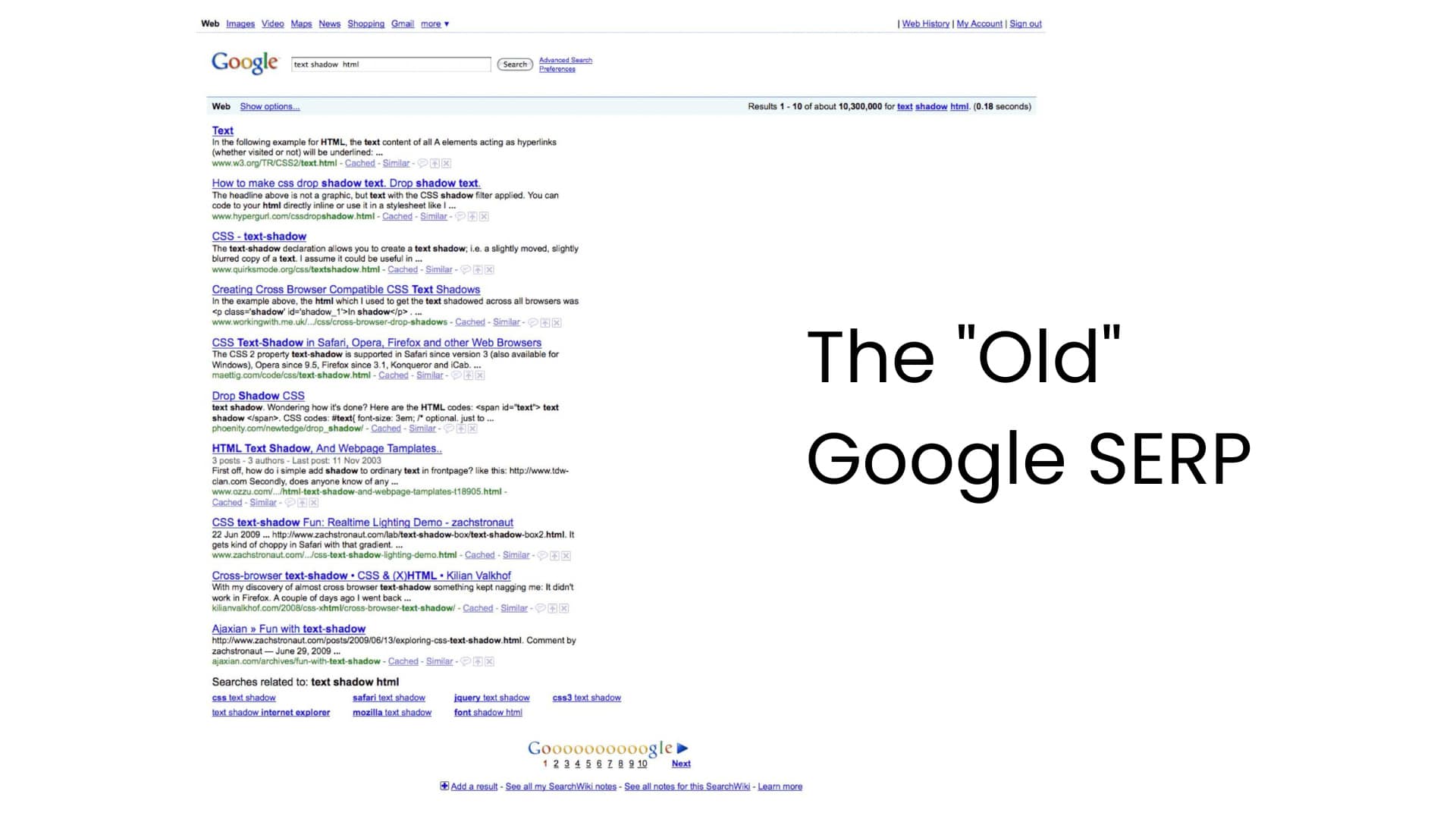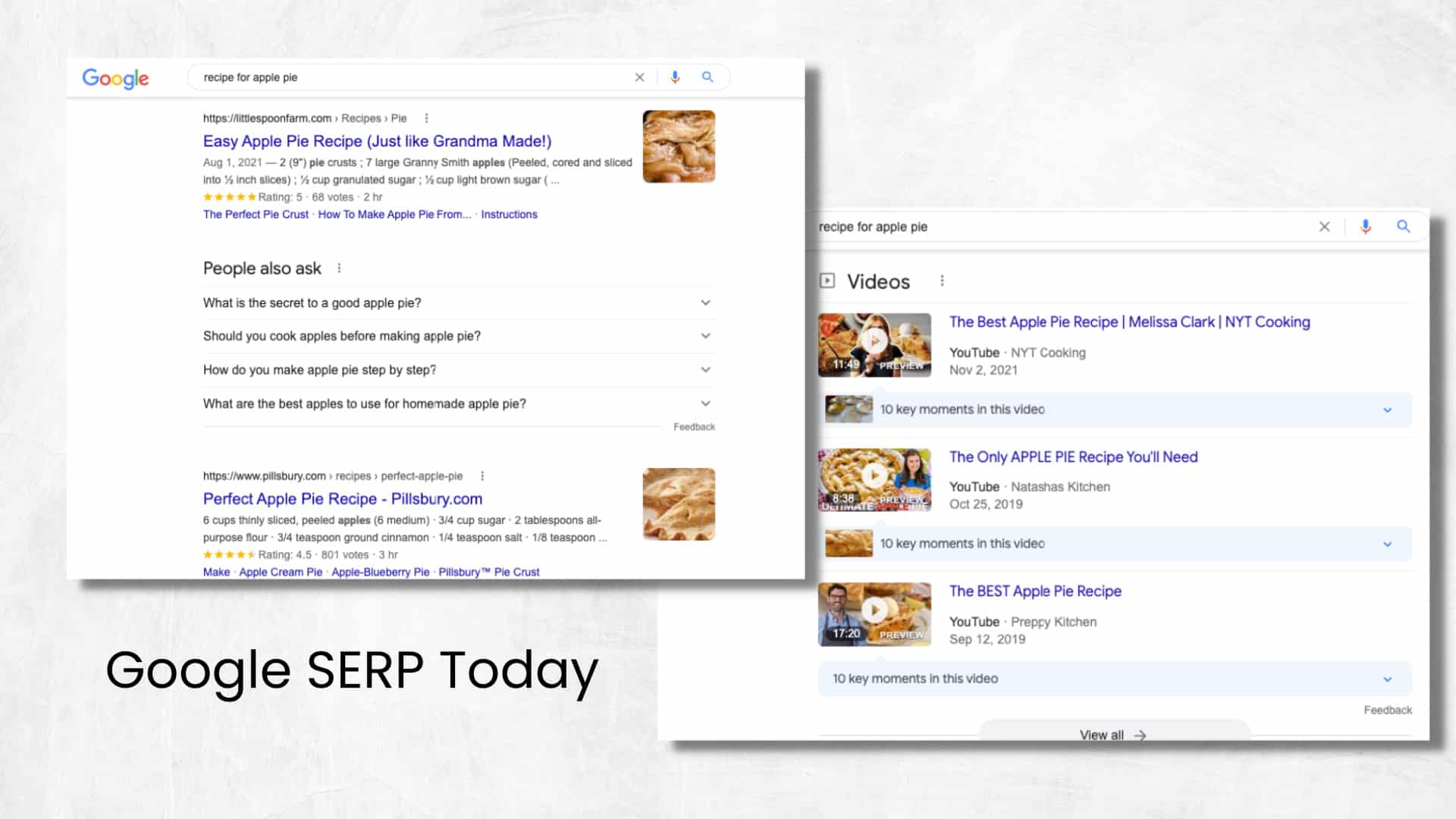Have you noticed how refined Google’s search results have become? Whether it’s the key ingredients to a great apple pie or how to sand down hardwood floors, Google has fine-tuned its content by providing the precise answer you need without you having to sift through loads of content.
Google has been working overtime to get us the best answers in the fastest way possible. In the world of search engine results, we’re all fighting the “pick me, Google” battle to get our content front and center to our audience. If you want to make it easier for Google to interpret your content, you’ll need to utilize something called schema markup. So how does it all work? In this article, we’re going to give you a crash course on how schema, structured data, and rich results can all help improve your website’s performance with search engines. Let’s break it all down.
Google SERP (Search Engine Results Page)
Have you noticed Google’s blue results links are getting a little crowded? This is because of new SERP features. They have been a game changer for the end users but a bit more complicated for businesses trying to compete in this space. SERP features are any form of the content displayed on the search engine results page. They are designed to provide a better experience for searchers by providing an informative snippet on what that content is about. To understand the power of SERP, take a look at how much it’s changed within the last decade:

Now take a look at what Google SERP looks like today:

You might already recognize the importance of SEO in its ability to improve your search rankings. But there’s also an additional weapon in your arsenal to use. By adding structured data via schema markup, it enables search engines to understand your content better. If they can better interpret your site’s content, Google can create ‘rich snippets,’ making your search results more visible to users.
What is Schema Markup?
Schema markup, in simple terms, is structured data that helps search engines understand your website. If you’ve structured your content well on your website, it’s easy for visitors to interpret it. On the other hand, search engines speak a different language and require different contexts to understand what different parts of your website mean. Properly marked-up website pages increase the chances of Google creating a ‘rich snippet’ of your content and using it in their results page.
The Basics of Schema Markup
If you want to increase your chances of getting your content in the rich results of SERP, you need to add structured data to your site. This can be done by adding the schema plug-in to your WordPress site.
But before you jump in feet first with schema.org, let’s talk about some quick terminology to help you better understand how it all works:
Structured Data
How does Google pull such specific information from a website page? It comes from adding structured data to your page. Structured data is a standardized format for providing information about a page and classifying the page content. For example, on a recipe page, structured data could be used to label the ingredients, cooking time, temperature, and calories of a specific recipe. Google uses structured data that it finds on the internet to understand the content of the page, as well as what visitors can do once they are on the page.
Structured Data: a code format that describes the content on your page. It’s a detailed way of describing your site to make it easier for search engines to understand.
Rich Results
Rich results, as the name implies, are the search results that stand out from the rest. They can include images, specific text, and even reviews. Because they are so fancy and eye-catching, they also have a higher click-through rate.
Rich Results: how you present your structured data to Google. It’s designed to highlight key information to help Google understand your page’s purpose and easily pull specific content from your page because of the way it’s presented.

Schema Markup
Schema markup is a type of structured data supported by Google. It’s essentially a coded shared language that Google and other big search engines can understand. It uses specific vocabulary to better present your content. By allowing you to specify certain types of information on a webpage, it will make you eligible for rich cards in SERPs.
Schema Markup: a form of data language that turns your website content into a code that search engines can easily interpret. Search engines read the code and use it to display search results in a specific and much richer way.
How To Set Up Schema Markup for Your WordPress Site
There are several ways you can easily add schema markup to your website. One way to add it to your WordPress site is to install a theme that has schema markup already included. If you search for schema on the WordPress theme directory, you get a number of results.
You can also install a dedicated plugin directly to your WordPress site. Once installed, you can go into settings to add schema markup to your site. The final option to add schema markup to your WordPress site is doing it manually, without a plugin. While this benefits no extra code, it will take a lot more work and time.
Final Thoughts
Adding schema markup to your website gives you an extra SEO boost and increases your chances of showing up in Google’s rich results. Being able to display your content directly on a search engine’s results page can be the difference between grabbing a new customer and not.
Will you take advantage of schema markup to improve your site performance? If you’re looking to improve your SEO strategy and website traffic, contact our team to see how we can help!

